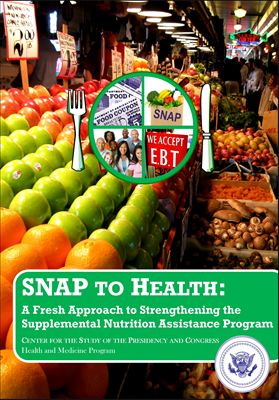Do sugar-sweetened beverages promote obesity? Yes, say papers in the New England Journal.
The New England Journal of Medicine has just published a series of articles on sugar-sweetened beverages to coincide with presentations at The Obesity Society’s annual meeting. Here are links to the articles. I’ve extracted brief quotes from some of them. And here’s a summary in the New York Times.
Perspective: J.L. Pomeranz and K.D. Brownell, Portion Sizes and Beyond — Government’s Legal Authority to Regulate Food-Industry Practices.
Regulations that affect “ordinary commercial transactions” (such as the sale of a product) are presumed to be constitutional if they have a rational basis and if the government body enacting them has the appropriate knowledge and experience to do so.
In the case of New York City’s portion-size restrictions, for example, the health department is an expert public health body that reviewed relevant scientific evidence on the health hazards associated with consumption of sugar-sweetened beverages and the effect of portion sizes on consumption patterns. The proposed policy thus has a rational basis….
Original Article: Q. Qi and Others, Sugar-Sweetened Beverages and Genetic Risk of Obesity
The study concludes: “the genetic association with adiposity appeared to be more pronounced with greater intake of sugar-sweetened beverages.”
Original Article: J.C. de Ruyter and Others, A Trial of Sugar-free or Sugar-Sweetened Beverages and Body Weight in Children
We conducted an 18-month trial involving 641 primarily normal-weight children from 4 years 10 months to 11 years 11 months of age. Participants were randomly assigned to receive 250 ml (8 oz) per day of a sugar-free, artificially sweetened beverage (sugar-free group) or a similar sugar-containing beverage that provided 104 kcal (sugar group). Beverages were distributed through schools….Masked replacement of sugar-containing beverages with noncaloric beverages reduced weight gain and fat accumulation in normal-weight children.
Original Article: C.B. Ebbeling and Others, A Randomized Trial of Sugar-Sweetened Beverages and Adolescent Body Weight
We randomly assigned 224 overweight and obese adolescents who regularly consumed sugar-sweetened beverages to experimental and control groups. The experimental group received a 1-year intervention designed to decrease consumption of sugar-sweetened beverages, with follow-up for an additional year without intervention….Among overweight and obese adolescents, the increase in BMI was smaller in the experimental group than in the control group after a 1-year intervention designed to reduce consumption of sugar-sweetened beverages, but not at the 2-year follow-up
Editorial: S. Caprio, Calories from Soft Drinks — Do They Matter?
These randomized, controlled studies — in particular, the study by de Ruyter et al. — provide a strong impetus to develop recommendations and policy decisions to limit consumption of sugar-sweetened beverages, especially those served at low cost and in excessive portions, to attempt to reverse the increase in childhood obesity.
Clinical Decisions: T. Farley, D.R. Just, and B. Wansink, Regulation of Sugar-Sweetened Beverages
This one is a point/counterpoint. On the basis of the evidence just presented, should government regulate sugary drinks?
New York City Health Commissioner Tom Farley says yes:
If a harmful chemical in schools were causing our children to get sick, people would demand government regulation to protect them. It is therefore difficult to argue against a government response to an epidemic of obesity that kills more than 100,000 persons a year in the United States and has an environmental origin.7
Federal, state, and local governments already regulate the food system, from farm to retail, in many ways and for many purposes, ranging from support of agriculture to prevention of foodborne illness. The question is not whether we should regulate food, but rather whether we should update food regulations to address this new epidemic.
David Just and Brian Wansink say no:
We must also recognize that the universe of foods that contribute to childhood obesity is much larger than sugar-sweetened beverages. Such a narrowly defined approach would have minimal chance for overall success. Rather, we must consider approaches that will involve parents, schools, and pediatricians in leading children toward more healthful eating habits and increased physical activity. In truth, we cannot hope to create regulations that restrict behavior holistically.
I’d say we now have plenty of evidence that habitual use of soft drinks raises risks for obesity, and plenty of evidence for the need for regulation.
Yes, it would be nice if “leading children to eat better” worked, but parents, teachers, and everyone else needs lots of help in coping with today’s food environment.
The New England Journal has done a great public service in publishing these papers as a series, and the authors all deserve much praise for taking on these difficult research projects.
OK city agencies: get to work!



